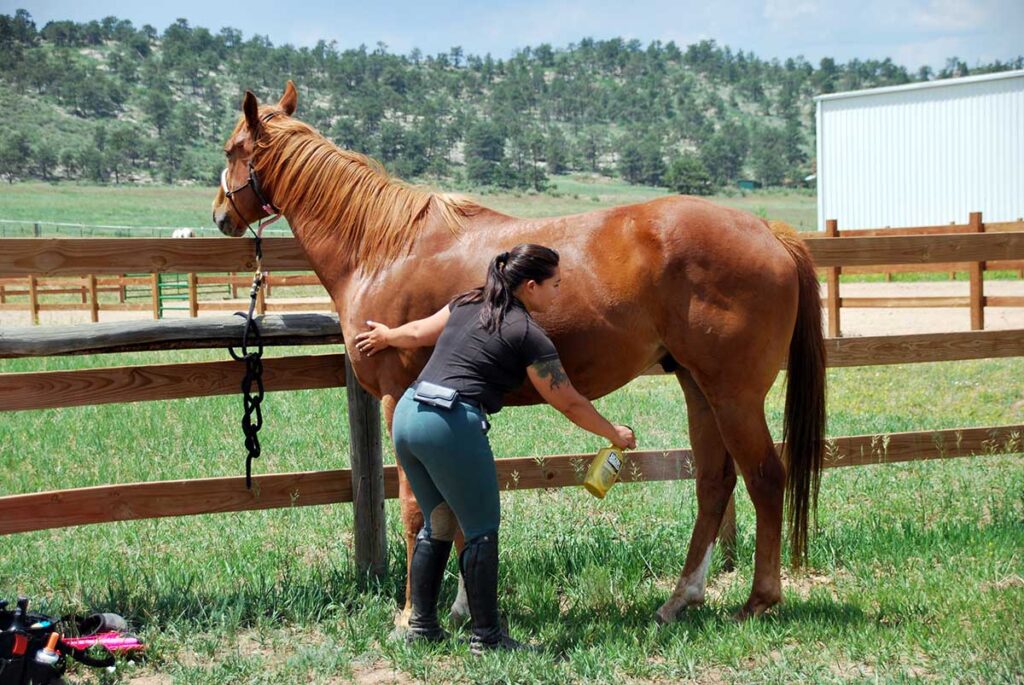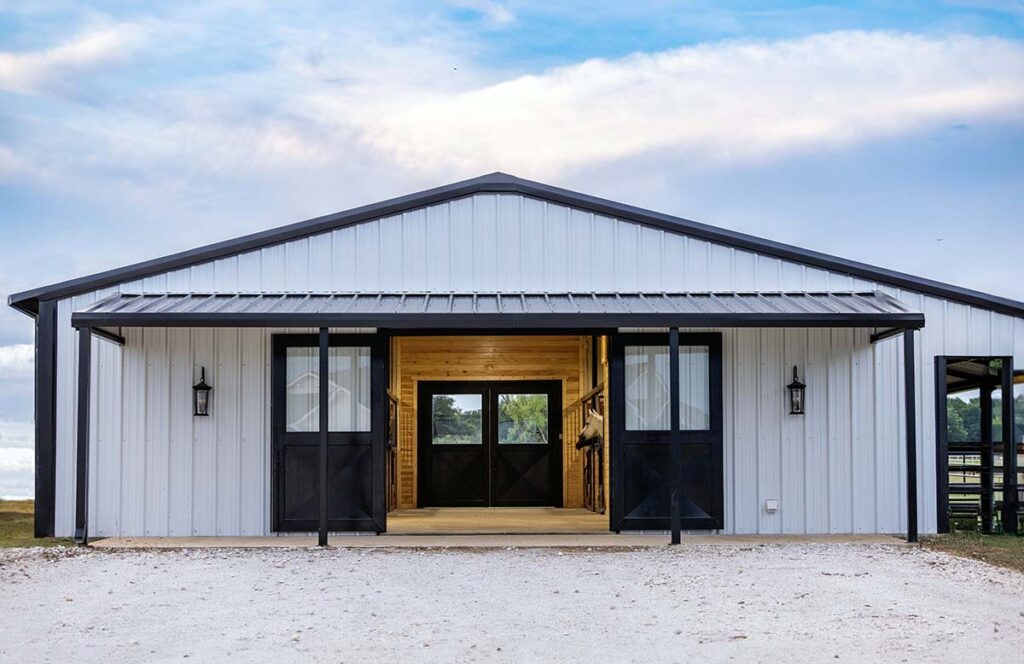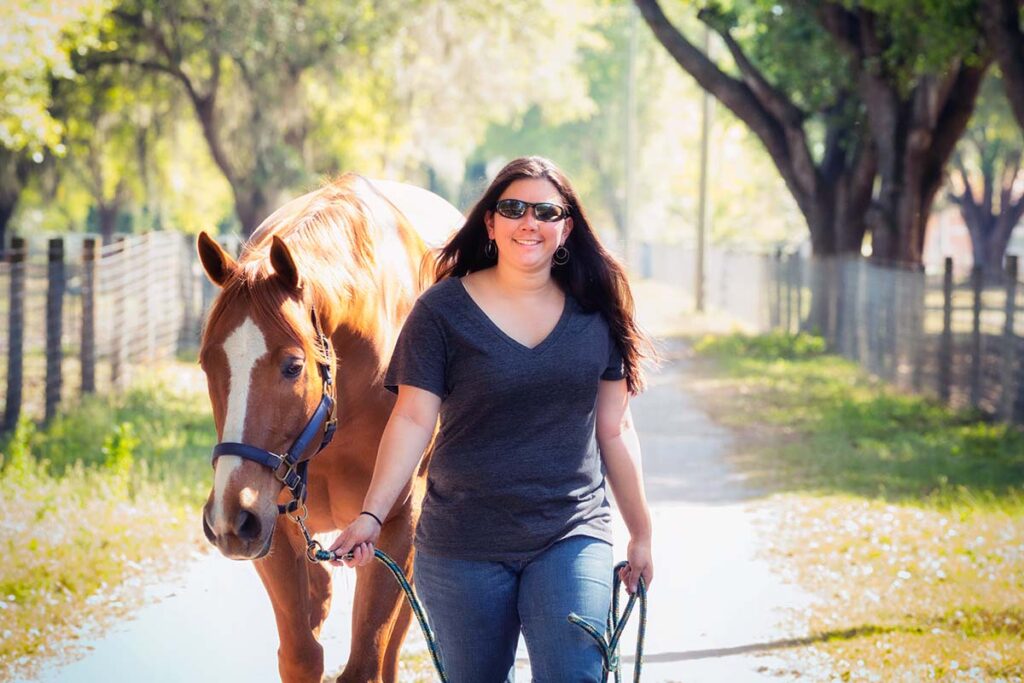When a horse limps, we say he’s “lame.” He’s in pain somewhere in his body, so don’t waste time finding and treating the issue. In a handful of instances, you might be able to find and fix the problem yourself. For example, if your horse just has a rock stuck in his shoe and is sound—not limping—after you remove it, your vet probably doesn’t need to make a trip out to the farm. In most cases, however, the best bet is to have your veterinarian diagnose and treat an equine lameness.
The reasons a horse might be lame range from minor issues that resolve in days to life-threatening ones that can take months or years to heal. Here are six common reasons you might have a lame horse.
Signs of Equine Lameness
Lameness is a sign of pain, but what are the signs of lameness? Not all lamenesses look the same, so watch for:
- An obvious head-bobbing action while walking or trotting.
- A hip hike or drop (a horse’s hips should move symmetrically when he’s walking and trotting; if one side moves higher [a hike] or lower [a drop] than the other, your horse might have a hind-end problem).
- Difficulty turning, both on large circles (like when you’re longeing) and small ones (as he might make walking around in his stall).
- A short, stilted, or choppy gait.
- Anything else that doesn’t look normal for your horse.
Noticing any or all these signs warrants a good look over and, likely, a call to your vet.
Hoof Abscesses
Some horses with hoof abscesses might look a little sore on one foot or they can become severely lame—even non-weight-bearing on the affected leg—suddenly (or acutely, as your vet might describe it). The good news is they typically recover quickly and well when treated properly.
Abscesses are localized accumulations of pus within the horse’s hoof—essentially, they’re hoof pimples. Think of it this way: When you have a pimple, that little bubble of pus under the skin can be slightly sore or incredibly painful. The fastest way to get rid of it is to pop it and let it drain. The pain relief is immediate because the pressure has been relieved.
This is the same way a hoof abscess causes pain in a horse; it usually starts with a localized, walled-off infection, which the body fights with white blood cells and inflammatory mediators (cells the body produces that help reduce inflammation). The buildup of infection, inflammation, and white blood cells magnifies, causing increasing pressure, particularly because the rigid hoof wall can’t expand. The result is pain and lameness.
There are many ways to treat abscesses, including wrapping the hoof with varying drawing agents to encourage the pus to exit the hoof. Your veterinarian will give you instructions on the best way to treat your horse’s scenario. He or she might also prescribe antibiotics if the infection appears severe.
Watch: How To Recognize and Treat a Horse’s Hoof Abscess
Other Hoof Issues
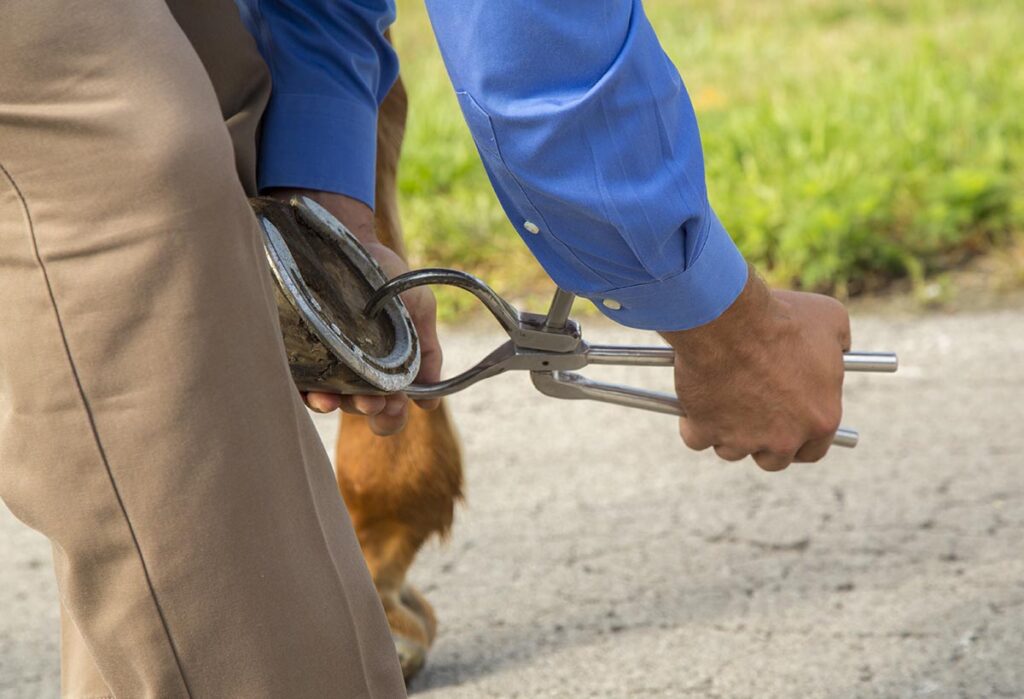
Abscesses aren’t the only problem that can plague your horse’s feet. Additional hoof-related lameness causes include:
A missing horseshoe If your horse is used to wearing shoes and he loses one (often called “pulling a shoe”), his foot might be sensitive. Your farrier can replace the shoe and, chances are, you won’t need to call your veterinarian. But do try to locate the shoe wherever you think your horse lost it (the pasture, a stall, or in an arena, for example) so another horse doesn’t step on it. Shoes can damage a horse’s hooves if they step on them the wrong way.
A sole puncture If your horse steps on a nail, part of a horseshoe (a “clip,” which helps hold them in place, for instance), or something sharp, he can damage the sole of his hoof and, possibly, important internal structures. If you find a nail or other item lodged in your horse’s hoof, do not remove it without first calling and consulting your veterinarian. Radiographs (X rays) taken with the object in place can help a veterinarian determine whether it caused damage to bones and/or joints within the hoof. He or she will advise you on the best course of treatment.
Sole or hoof bruises If your horse steps on a rock or another hard object, his hoof can bruise. When this happens, you might be able to see discoloration caused by the bruise on the sole or other parts of the hoof. You might need both your veterinarian’s and farrier’s help to remedy bruises. Depending on the severity, your veterinarian might prescribe non-steroidal anti-inflammatory medications and recommend special boots, shoes, or pads to prevent further damage.
Arthritis
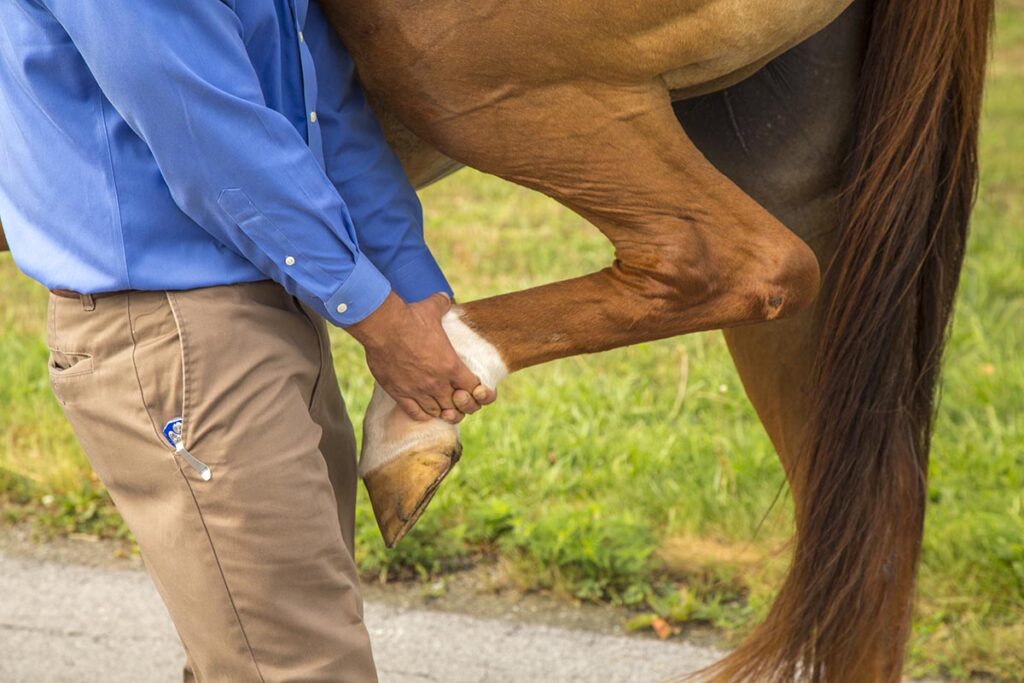
Horses of all ages can suffer from osteoarthritis (often called OA or just arthritis). Studies have shown it’s very common: Up to 60% of equine lameness is related to OA. Associated lameness usually develops slowly over time (chronic) rather than suddenly.
Osteoarthritis can affect any joint where two cartilage-covered bones meet (called an articular joint). Commonly affected joints can include the hocks, knees, stifles, and fetlocks. In addition to lameness and stiffness, you might notice affected joints are warm to the touch, swollen due to excess joint fluid, deformed due to changes in the bones, and have crepitus (a popping, grinding, and crackling sound and sensation).
There is no cure for arthritis, but veterinarians can prescribe medications or recommend supplements to help minimize the signs of disease.
Trauma/Injury
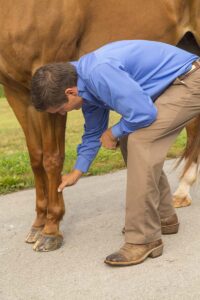
You’ll soon learn (if you haven’t already) that horses are masters at injuring themselves. So, it should come as no surprise that trauma (either during work, caused by a pasturemate, or self-inflicted) is a frequent lameness cause. Examples of problems you might encounter include soft tissue (tendon, ligament, and/or muscle), bone, and joint injuries.
Your veterinarian can help definitively diagnose what’s causing your horse pain. He or she might need to use diagnostic imaging (such as X rays or ultrasound) or diagnostic analgesia (essentially, numbing certain points on a lame horse’s legs to determine where the pain originates).
Once you have a diagnosis, your veterinarian can recommend an appropriate treatment and/or rehabilitation plan.
Laminitis
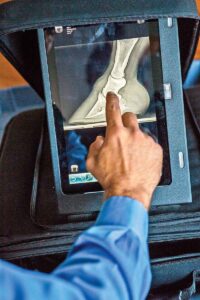
This cause of equine lameness is also a medical emergency. It’s the inflammation of the tiny, interwoven lamellae that attach a horse’s hoof to the underlying coffin bone and support the horse’s entire body weight. Anything that impacts the lamellae’s integrity, such as inflammation, weakens their hold. This causes the coffin bone to displace within the hoof capsule and rotate and/or move toward the ground. The condition is very painful and often life-threatening.
Horses with laminitis generally show:
- Reluctance or inability to walk or profound lameness.
- Frequent weight-shifting.
- Abnormal stance and weight distribution to relieve pressure on the affected limb(s).
- Increased heart and respiratory rate and bounding digital arterial pulses.
- Feet that are consistently warmer than usual to the touch.
If you suspect your horse might have laminitis, call your veterinarian immediately. Bring the horse into a deeply bedded stall, if possible, or to a small, confined area with soft footing until your veterinarian arrives.
Initial treatment is supportive and aimed at keeping the horse comfortable. Your veterinarian might recommend cryotherapy (cooling the horse’s hooves and lower limbs with ice boots or an ice/water slurry), pain-relieving medications, confinement (to prevent him from moving around too much and causing additional damage) in a location with deep bedding and/or soft footing, and cushioned hoof boots to relieve pressure. In some cases, laminitis causes so much uncontrollable pain that the most humane option is euthanasia.
If your horse survives the initial episode, your veterinarian and farrier might work together to develop a long-term treatment plan that involves diet modifications, specialized shoeing, and pain management, among others.
Navicular Disease
Navicular disease (more accurately called podotrochlosis) is a catchall term for a variety of injuries to the navicular bone (located in the back of the horse’s hoof) and its related structures. It usually affects both front feet.
Early in the disease process, affected horses might show a shortened stride when they start walking and/or while warming up. In chronic cases, the horse’s stride becomes choppier and less fluid, and he lands toe-first (instead of heel-first, as is normal) to take the pressure off the back hoof.
Your veterinarian and farrier will need to work together to manage horses with navicular. Affected horses can benefit from both specialized shoeing and medical treatments.
A Lame Horse Is No Joke
Equine lameness can greatly affect a horse’s quality of life and performance. It can stem from a variety of causes, ranging from benign hoof bruises to life-threatening laminitis. By understanding the causes of equine lameness, you can watch for signs of pain and work with your veterinarian to initiate timely treatment.
Are you enjoying this content? Sign up for My New Horse’s FREE newsletter to get the latest horse owner info and fun facts delivered straight to your inbox!



